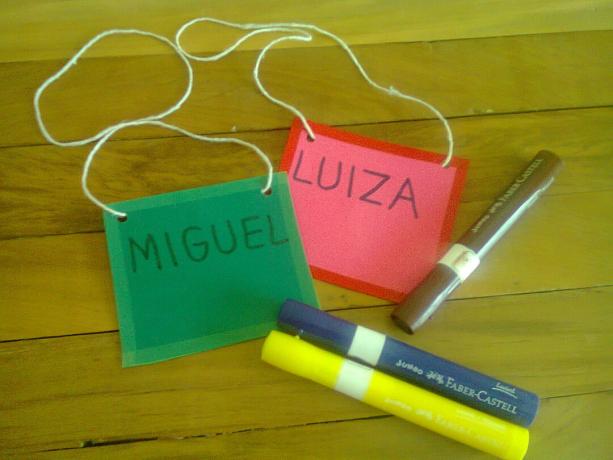
We selected in this post some tips and suggestions for Adaptation Dynamics to work with students from early grades and early childhood education.
At dynamics they are instruments, tools that are part of a process of formation and organization, which enable the creation and recreation of knowledge. We are offering dynamics that were extracted from some handouts and books. We hope they will be of great use.
See also:
Index

objective: Recognize the writing of your name from the writing of the names of all colleagues.
Materials:
Procedures:
The teacher asks the children to make a circle with the chairs. Afterwards, he distributes the cards with the names so that the children can put them on the chairs. The chair dance begins, where at the end of the song, each person must sit on the chair where the card with their name appears. Play the game several times, always changing the chairs.
Time: 30 minutes.
Space: Classroom.
Age: From 1 year and a half.
Material:
Objective: Meet the colleague.
Preparation: On pieces of cardboard or card stock, write each child's name in block capital letters and glue a picture of them. Plasticize for greater durability (use Contact®).
Description:
Place all cards on a table or on the floor, with the photo and name facing down. One child at a time takes a card and hands it to the classmate who appears in the photo. The teacher then says the name of the “discovered” child to encourage recognition by the group. Another way to carry out the activity is to leave the cards spread out on the table with the photo facing up. Ask each person to take their card and stick it on the call panel, a kind of shoe rack with transparent pockets, which can be made on a cardboard base. As this is a call, it is possible to repeat this activity daily, when all the children are present, during the first months of the year. Resume it if a new member joins the group.

Goal: develop fantasy and reflection on the group's rapport.
Feature: imagination, verbalization, speed, team spirit.
Description:
Comments:
The educator (coordinator) must emphasize that a fundamental rule of the game is the non-interruption of the story, that is, when receiving the plot passed by the colleague on his left, the participant must immediately continue the story with a relative coherence.
Also check: Earthquake dynamics for back to school for elementary school
Objective: promote the integration of the group.
Description:

Also check: How to make classes more dynamic in Early Childhood Education
Subscribe to our email list and receive interesting information and updates in your email inbox
Thanks for signing up.


